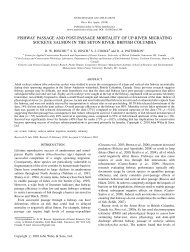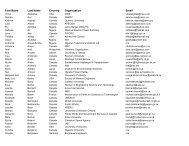Managing External Innovation: The Case of Platform Extensions
Managing External Innovation: The Case of Platform Extensions
Managing External Innovation: The Case of Platform Extensions
Create successful ePaper yourself
Turn your PDF publications into a flip-book with our unique Google optimized e-Paper software.
production process. As the number <strong>of</strong> steps in an interconnected process<br />
increases, the process becomes increasingly difficult to complete successfully and<br />
the time spent increases; therefore, the probability <strong>of</strong> success and the output<br />
quality may decrease. Having a modular design reduces the range and scope <strong>of</strong><br />
potential cycles and this limitation results fewer cycles and less time spent on the<br />
development process. As a result modularity will increase the probability <strong>of</strong><br />
success and the quality <strong>of</strong> the final output.<br />
• Accommodating uncertainty by partitioning the design parameters into those that<br />
are visible and those that are hidden. Hidden parameters are isolated from other<br />
parts <strong>of</strong> the design, and are allowed to vary. Modular designs are flexible<br />
therefore; if new knowledge later yields a better solution for one <strong>of</strong> the hidden<br />
modules, then it will be relatively simple to incorporate the new solution without<br />
having to change the rest <strong>of</strong> the system (Baldwin & Clark, 2000).<br />
So the concept <strong>of</strong> modular architecture spans an important set <strong>of</strong> principles: design rules,<br />
independent task blocks, clean interfaces, nested hierarchies, and the separation <strong>of</strong> hidden<br />
and visible information. <strong>The</strong> modular platform architecture helps to focus development<br />
efforts on developing specific modules without having to learn the whole system. As<br />
well, it enables platform owners to keep control <strong>of</strong> the platform core architecture that is a<br />
powerful barrier against competing architecture and protects the integrity <strong>of</strong> the platform<br />
itself (Cusumano & Gawer, 2002; Messerschmitt & Szyperski, 2003).<br />
16
















